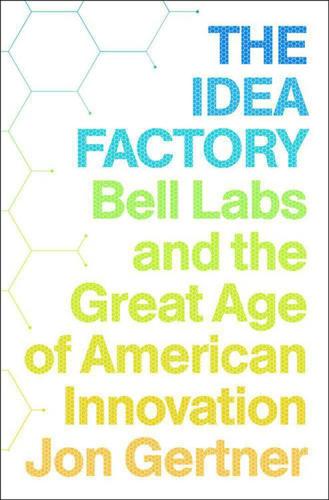
The Idea Factory: Bell Labs and the Great Age of American Innovation
by
Jon Gertner
Published 15 Mar 2012
The early crystal wireless radios that so many Labs scientists grew up with depended on semiconductor crystals like silicon. Silicon crystals would process the incoming radio signal, transforming a weak AC signal into DC, so it could be heard through a headphone. Three Bell Labs researchers in particular—Jack Scaff, Henry Theurer, and Russell Ohl—had been working with silicon in the late 1930s, mostly because of its potential for the Labs’ work in radio transmission. Scaff and Theurer would order raw silicon powder from Europe, or (later) from American companies like DuPont, and melt it at extraordinary temperatures in quartz crucibles.
…
When the material cooled they would be left with small ingots that they could test and examine. They soon realized that some of their ingots—they looked like coal-black chunks, with cracks from where the material had cooled too quickly—rectified current in one direction, and some samples rectified current in another direction. At one point, Russell Ohl came across a sample that seemed to do both: The top part of the sample went in one direction and the bottom in the other. That particular piece was intriguing in another respect. Ohl discovered that when he shone a bright light on it he could generate a surprisingly large electric voltage. Indeed the effect was so striking, and so unexpected, that Ohl was asked to demonstrate it in Mervin Kelly’s office one afternoon.
…
Scaff, “The Role of Metallurgy in the Technology of Electronic Materials,” Metallurgical Transactions, March 1970; and Ernest Braun and Stuart Macdonald, Revolution in Miniature: The History and Impact of Semiconductor Electronics (Cambridge: Cambridge University Press, 1982). 14 This episode is described in “The Story of the Transistor,” a 1958 Bell Labs pamphlet, and is explored in deeper detail in both Walter Brattain’s AIP oral history with A. N. Holden and W. J. King and an AIP oral history interview of Russell Ohl by Lillian Hoddeson. 15 Scaff, “The Role of Metallurgy in the Technology of Electronic Materials.” 16 Ibid. 17 Morgan Sparks, “Semiconductor Research,” Bell Laboratories Record, June 1958, p. 193. 18 Michael F. Wolff, “The R&D ‘Bootleggers’: Inventing Against Odds,” IEEE Spectrum, July 1975. 19 My rendition of the chronology of events leading up to the invention is drawn from a number of sources.

The Switch: How Solar, Storage and New Tech Means Cheap Power for All
by
Chris Goodall
Published 6 Jul 2016
If wires are attached to the back and front of the panel, the electron will flow back to the layer from which it originally came, creating useful electrical current. This sounds simple, and in one sense it is. However, it took several decades before Einstein worked out that it was photons that imparted energy to electrons, causing the flow of electricity – the finding for which he won a Nobel Prize. Russell Ohl, an American engineer at Bell Labs, developed a breakthrough understanding in the late 1930s of how to produce a more efficient cell using by creating a junction between two thin layers of silicon doped with tiny quantities of phosphorus or boron impurities. These dopants produce a natural surplus or deficit of electrons each side of the junction and the asymmetry is crucial to the creation of an efficient solar cell.